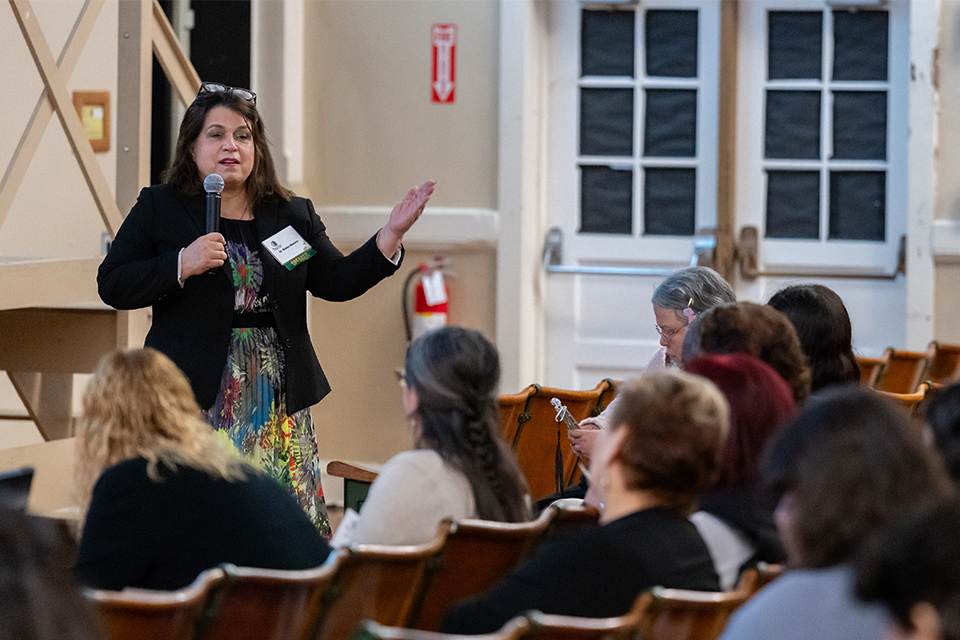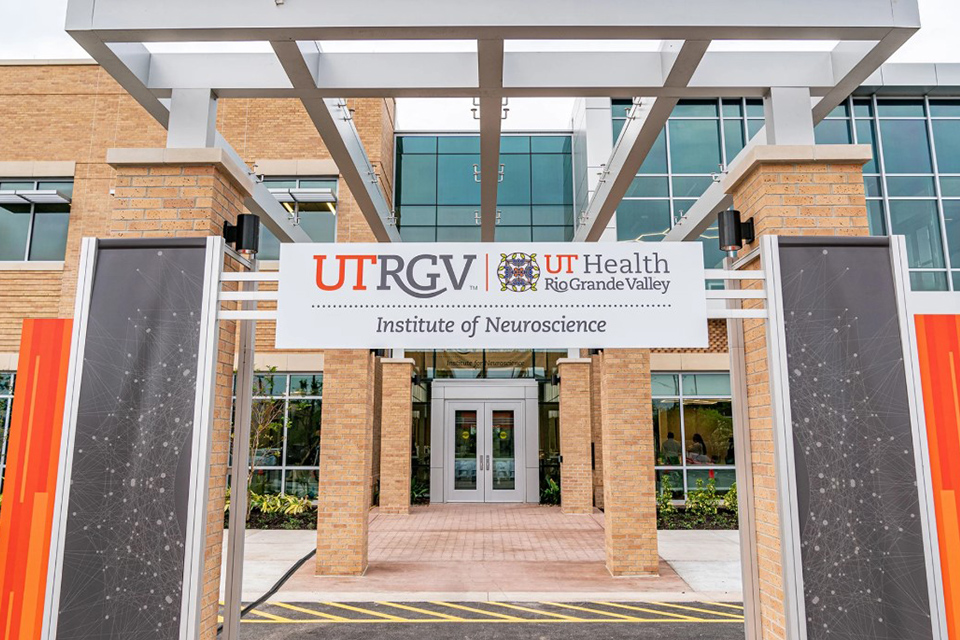By Saira Cabrera
RIO GRANDE VALLEY, TEXAS – NOV. 20, 2025 – For many families in the Rio Grande Valley, memory loss is an all-too-familiar story.
Parents misplace keys. Grandparents forget familiar names. Over time, everyday tasks slip away.
It is a pattern Dr. Gladys Maestre has dedicated her life to changing.
Maestre, director of the UTRGV Alzheimer's Disease Resource Center for Minority Aging Research, said it is not unusual for families in South Texas to tell her about three or four relatives showing signs of memory decline. But there is hope on the horizon.
November marks Alzheimer's Awareness Month, and this year carries special significance with the approval by Texas voters of Proposition 14, which creates the Dementia Prevention and Research Institute of Texas (DPRIT).
That means $3 billion will be invested to advance research across the state.
‘BRINGS HOPE’
For Maestre and her team, this is a pivotal moment.
"Proposition 14 brings hope – not just for researchers, but for the countless families in Texas who are affected by dementia," she said. "It tells us that the people of Texas believe in science and believe that we can make a difference together."
Nationally, one in nine adults older than 65 – about 11 percent – live with Alzheimer's disease. In the Valley, the rates are double that, at 23 percent.
Let that sink in for a moment: One in four adults over 65 in the Valley lives with Alzheimer’s disease.
Maestre's research and community health data shows a convergence of factors.
“Genetics, chronic disease, environment – and limited access to care,” she said. “All of that makes our population especially vulnerable."
Maestre's work spans neuroscience, genetics and community health, placing the focus on identifying risk factors and developing culturally informed prevention strategies. Her team at the new Memory and Aging Center includes colleagues from the Alzheimer’s Disease Resource Center for Minority Aging Research (AD-RCMAR), established in 2018 through a grant from the National Institute on Aging and the South Texas Alzheimer’s Disease Research Center (STAC).
The STAC was established in 2021 in collaboration with colleagues in San Antonio, and includes researchers from across UTRGV's colleges – medicine, health professions, social work, social sciences and engineering. Together, the team is building one of the nation's most comprehensive research programs on minority aging and dementia.
COMMUNITY SCIENCE
At the heart of the center's success is collaboration. The Memory and Aging Center works with local clinics, community groups, and patient advocates to reach families who might otherwise go undiagnosed or untreated.
"Research can't happen in isolation," Maestre said. "Our work begins in the community, listening to people, earning their trust, and learning how we can help."
"We want people to know there is hope," Maestre said. "We can delay, and sometimes prevent, memory decline through early intervention, healthy habits and education."
A FUTURE OF DISCOVERY
The newly established DPRIT fund offers a historic opportunity to expand that work. With $3 billion designated for brain research and care innovation, universities like UTRGV are poised to play a vital role in uncovering solutions for Alzheimer's and related diseases.
Dr. Everardo Cobos, interim dean of the UTRGV School of Medicine and chair of Medicine and Oncology, said Maestre's leadership and the university's cross-disciplinary research model are positioning the Valley as a key player in Texas' next era of discovery.
"Our researchers are tackling diseases that disproportionately impact our communities," Cobos said. "Through science and collaboration, we're transforming the way we understand – and one day, will prevent – Alzheimer's disease."
The work being done in South Texas has statewide and national relevance, he said.
"Dr. Maestre and her team exemplify UTRGV's mission of combining innovation with service to improve lives," Cobos said. "Their research is giving families across Texas something we all need: hope."
STRENGTHENING OUR PURPOSE
For Maestre, the mission remains both scientific and deeply personal.
"Every time we help someone understand what's happening to their memory – and that they are not alone – it strengthens our purpose," she said. "We may not have a cure yet, but with what we're learning, we're moving closer every day.
ABOUT UTRGV
Celebrating its 10th anniversary during the 2025-2026 academic year, The University of Texas Rio Grande Valley (UTRGV) is on a mission to transform the Rio Grande Valley, the Americas and the world. One of the country’s largest Hispanic-Serving Institutions and Seal of Excelencia certified, UTRGV has earned national recognition for its academic excellence, social mobility and student success since opening in Fall 2015. Ranked among the Best Colleges for your Tuition (and Tax) Dollars in 2025 by Washington Monthly (#7 nationally; #1 in Texas), UTRGV continues to break enrollment records, launch new academic and athletics programs and progress toward achieving R1 research status.
The only university in Texas with schools of Medicine and Podiatric Medicine, UTRGV’s regional footprint spans South Texas – with locations, teaching sites, and centers established in Edinburg, Brownsville, Rio Grande City, McAllen, Weslaco, Harlingen, Laredo, Port Isabel and South Padre Island.


